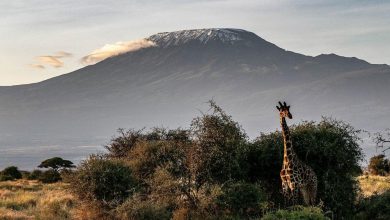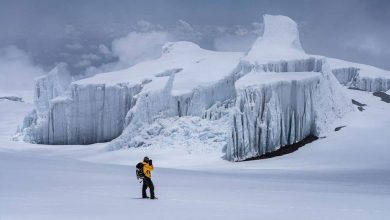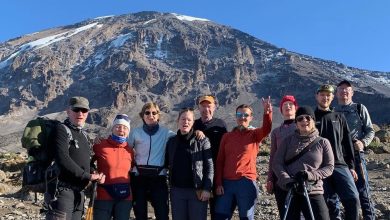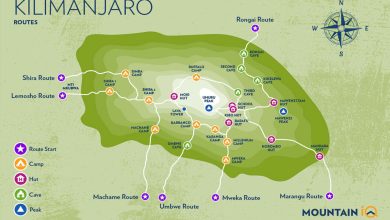Mount Kilimanjaro National Park: A Wilderness Wonderland
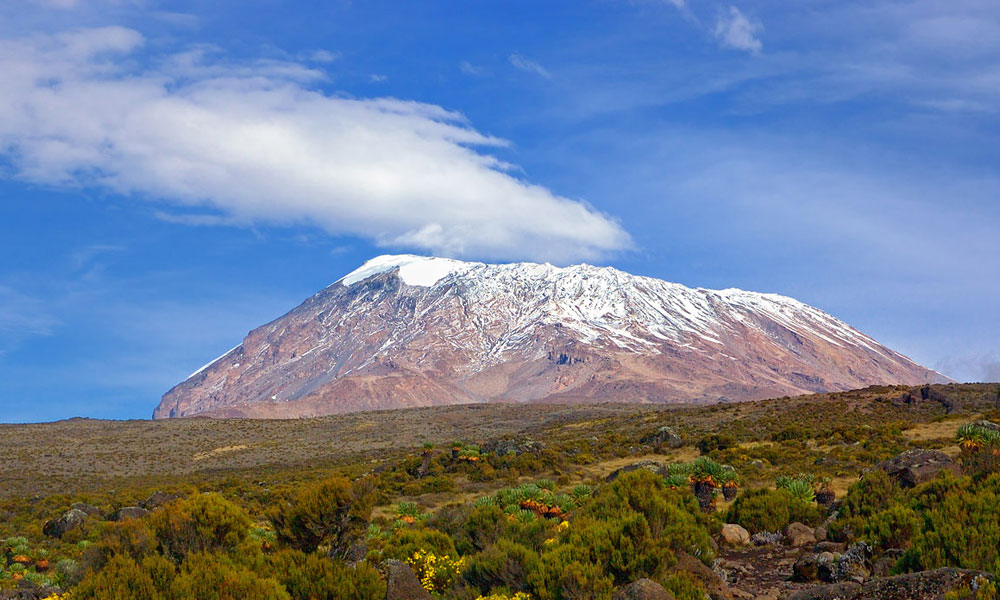
Mount Kilimanjaro National Park is a natural sanctuary designed to conserve the wildlife, flora, and fauna of Tanzania. This grandeur is in Tanzania and lies approximately 300 kilometers (190 mi) south of the equator, near Moshi. The national park sits in the lap of Mount Kilimanjaro, and Montane Forest Belt surrounds the above line at 1,820 meters (5,970 ft). Talking about the exact location, Mount Kilimanjaro National Park is located at 2°50’–3°10’S latitude and 37°10’–37°40’E longitude.
Mount Kilimanjaro National Park covers an area of 1,688 square kilometers (652 sq miles), a natural habitat for several plant and animal species. The National Park rises 4,877m above surrounding plains to 5895m at its peak {Mount Kilimanjaro}. Kilimanjaro is one of the most attractive entities in the national park, while the diverse landscapes, endangered plants, and animal species also influence the total number of visitors every year.
Highlights of Mount Kilimanjaro National Park
- The highest peak in Africa, Mount Kilimanjaro
- A diverse range of flora and fauna inside the national park
- Ash Pit, the volcanic landmark.
- Lauwo Waterfall inside the Montane Forest Belt
- Shira Peak and Mawenzi Peak
- Awe-inspiring scenes of glaciers and ice structures
Overview of Mount Kilimanjaro National Park’s Geographical Features
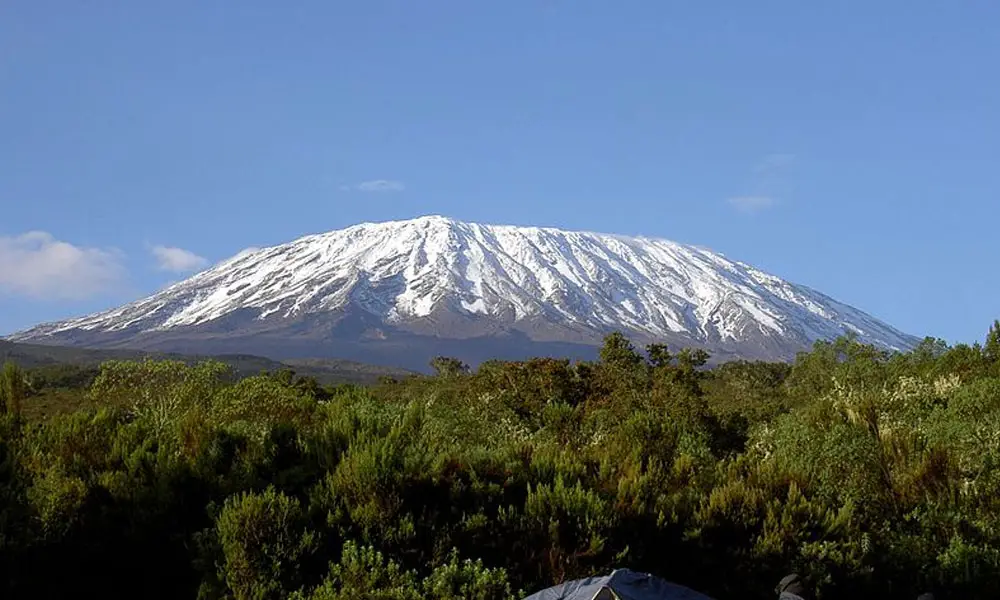
Mount Kilimanjaro National Park is named after the highest peak in Africa, Mount Kilimanjaro. As said earlier, the national park lies under Kilimanjaro Peak, and it features a trail that leads trekkers and mountaineers to the lap of the mountain.
The national park features fluctuations in landscapes and elevation. The lower belt of the region is plain and still with warmer temperatures and climate conditions. Similarly, as you go above 1,820 meters (5,970 ft), the belt of Montane Forest stretches around the region, offering habitat for a wide range of flora and fauna. Similarly, as you hike up, you can reach the Mount Kilimanjaro base camp at 16,732 feet (5,100 meters) above sea level. Alpine climate and weather conditions with thin vegetation are prominent in this region. It is the place where the Kilimanjaro expedition starts.
Major Attractions of The National Park
Mount Kilimanjaro
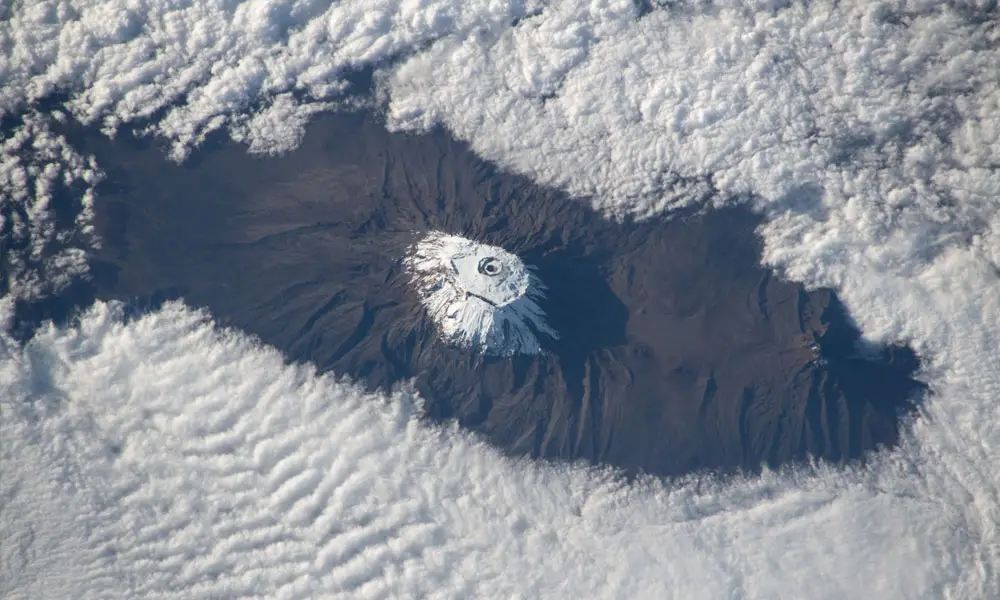
Mount Kilimanjaro lies within Mount Kilimanjaro National Park, and it is the tallest peak in Africa – it stands at 5,895 m (19,341 ft) above sea level. Not only is this the highest peak, but it is also the only highest single free-standing mountain above sea level globally. It is a popular mountain with three volcanic cones: Kibo, Mawenzi, and Shira.
Mount Kilimanjaro is a volcanic mountain, but only a few studies have been done around it. Since there has not been any significant erosion letting human studies know about the igneous strata comprising the volcano’s structure, researches are yet to be done in abundant amount. However, it is stated that the volcanic actions in Kilimanjaro were active about 2.5 million years ago. The last volcanic eruption is estimated to have occurred 1.9 million years ago.
Regarding three volcanic cones, Shira features a broad plateau at 3,800 m (12,500 ft) above sea level. Geologists believe it is filled with Caldera and is composed of basic lavas. Kibo, on the other hand, is the largest cone of Mount Kilimanjaro, with an area of 24 km (15 mi). It comprises a symmetrical cone with a cliff rising 180 to 200 m.
Mawenzi Peak
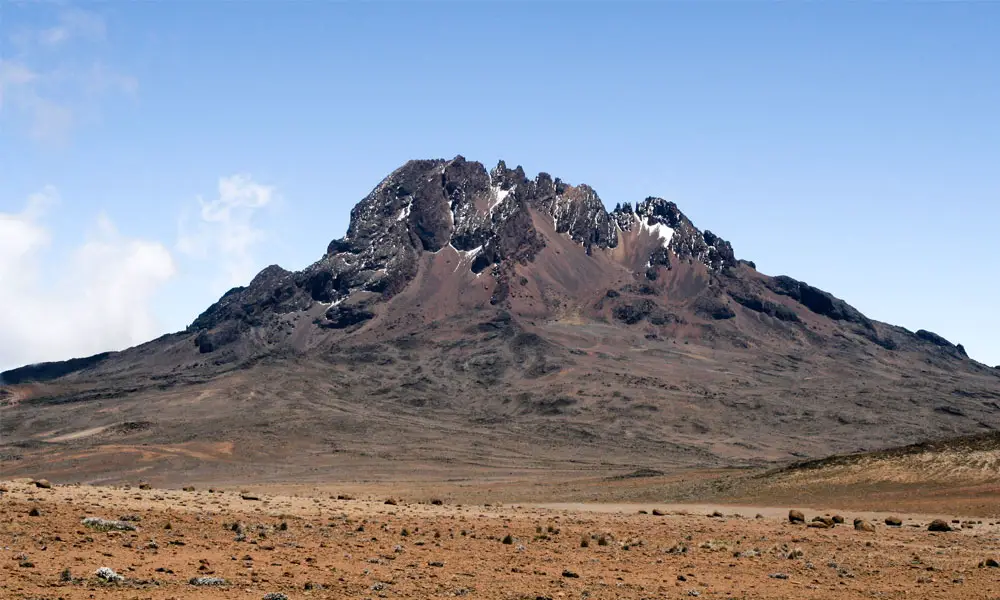
Mawenzi Peak is located within the Kilimanjaro National Park, and it is also one of the highest mountains in Africa, with an elevation of 5,149 meters above sea level.
Shira Peak
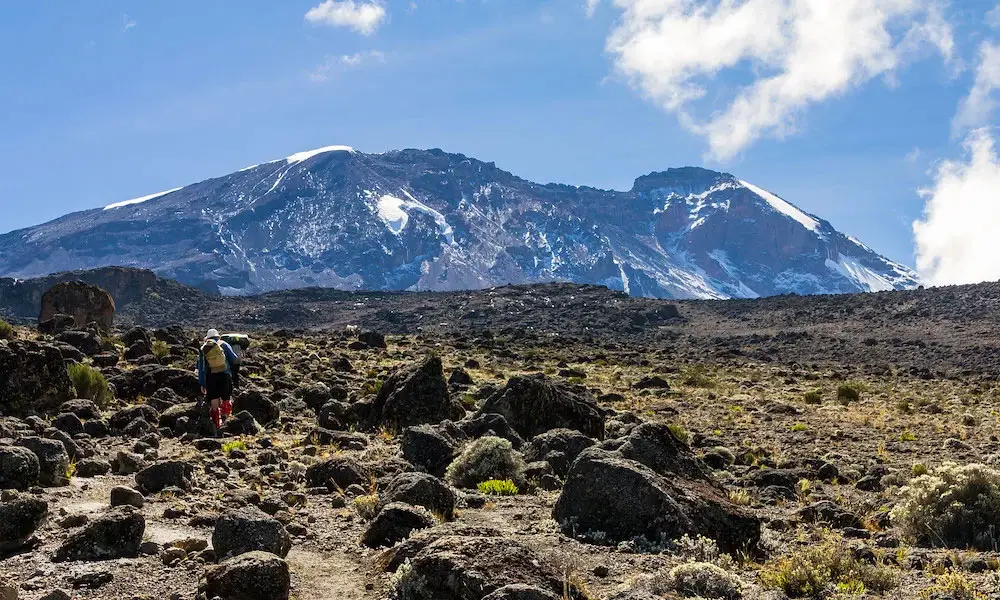
Shira Peak is another intriguing natural perk of Kilimanjaro National Park. It stands at 3962 meters above sea level. Geologists believe that Shira Peak was the tallest peak in Africa before it collapsed around 750 years ago.
Shira Plateau
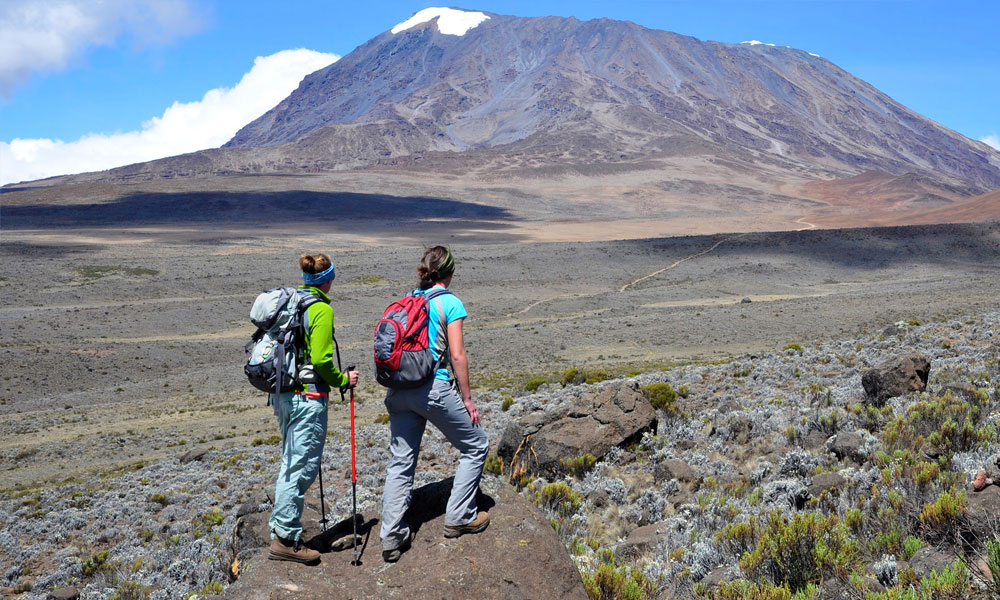
As Shira Peak collapsed around 750 years ago, it formed a wide plateau around it. Currently, this plateau is an open grassland, heath, and moorland, rich in natural vegetation. It features some of the endemic plants, including Senecio and Lobelias.
Lake Chala
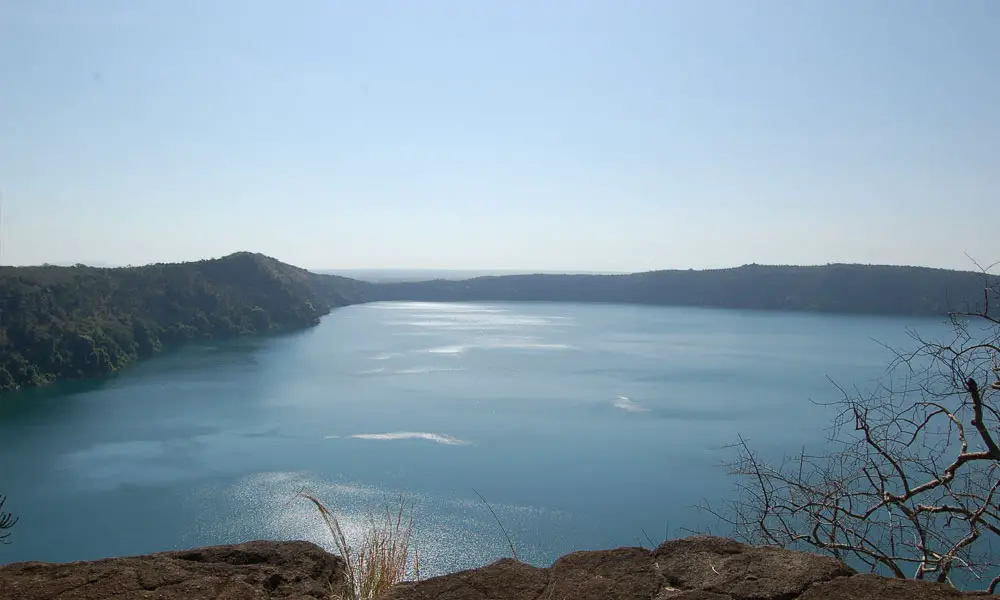
Lake Chala is located outside the boundary of Mount Kilimanjaro National Park. But still, it is one of the best destinations that attracts travelers throughout the year. It has a unique connection with Kilimanjaro Peak as the water generated from the mountain is stored and drawn via underground streams to Lake Chala.
Lauwo Waterfall
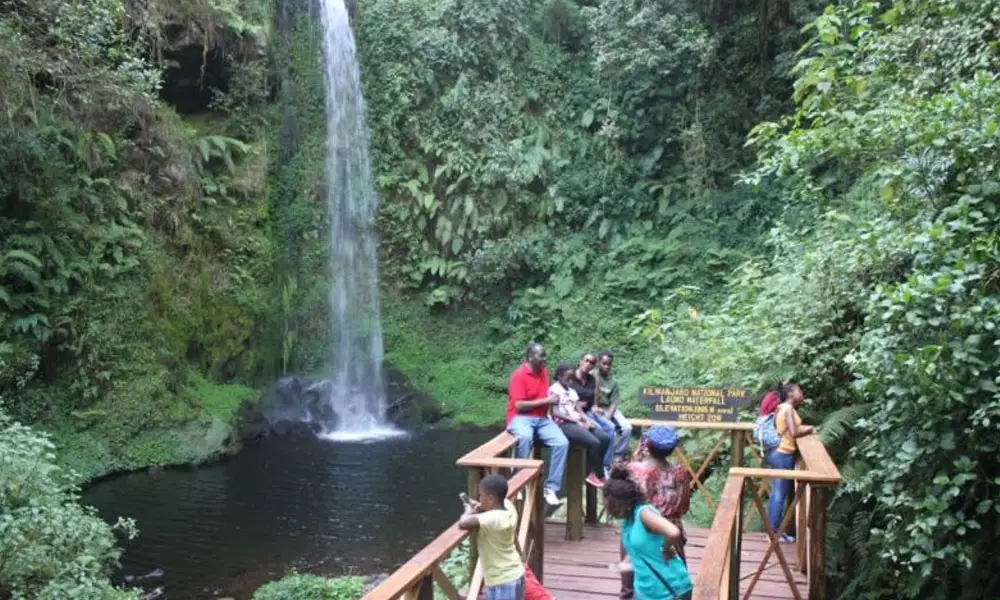
Lauwo Waterfall is located inside the Montane Forest Belt. It lies in the trail of the Marangu route, which stretches around 2.8 kilometers and is one of the best attractions of Kilimanjaro National Park.
Glaciers

Most of the glaciers of Mount Kilimanjaro National Park lie in the Kibo region of the peak. The peak is dissected with the snow line that has formed two individual glaciers around it. The glaciers around the summit do not portray any ideal movement, which geologists believe is because of low thickness. It is said that Kilimanjaro went through five glacial episodes, contributing to the creation and deformation of glaciers and large icy sheets. Geologists believe Mount Kilimanjaro was covered with large icy sheets during the Last Glacial Maximum in the Pleistocene epoch. But it is thought to have gone extinct around 11,500 years BP due to prolonged dry conditions.
Flora and fauna diversity
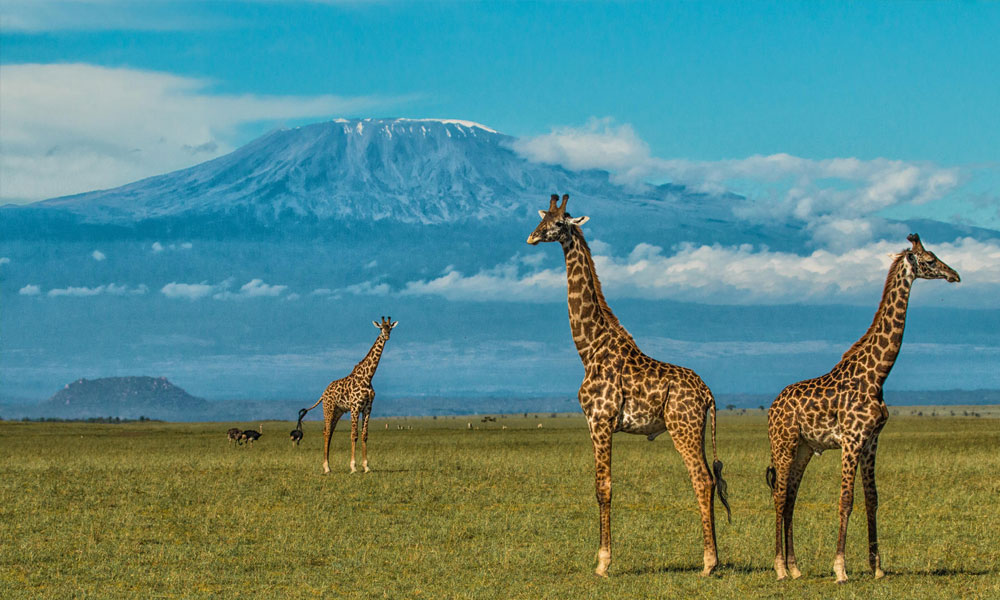
Mount Kilimanjaro National Park is home to several animals and plants. It is not strange to see wildlife like Grey Duiker and rodents around the Kilimanjaro tree hyrax. Similarly, if you see above the timberline region of the National Park, bushbuck, and red duiker are the most common animals to see.
Mount Kilimanjaro National Park also has the Montane Forest line, where Cape buffaloes live in their naturally enriched habitat. Similarly, animals like blue monkeys, eastern black and white colobuses, bush babies, and leopards reside in the Montane Forest. If you go down below the Namwai and Tarakia rivers, you can encounter a group of wild elephants. To summarize the details, Kilimanjaro National Park is home to 140 species of mammals; 7 primates, 25 carnivores, 25 antelopes, 179 bird species and 24 species of bat.
Get Insights on:
- 10 Mount Kilimanjaro Facts
- Tips for climbing Kilimanjaro
- Yellowstone National Park
- Sagarmatha National Park
Best Time to Visit Mount Kilimanjaro National Park
The best time to visit Mount Kilimanjaro National Park is January and February. During this time, the weather is usually stable and favorable for traveling. Similarly, the clear and open skies offer a great getaway for the best sightseeing experiences in the national park.
Another best time to visit Mount Kilimanjaro National Park is August, September, and October. The weather patterns are somewhat similar to January and February. Mild temperatures, less rainfall, and stable weather conditions are attractive notions of these months.
